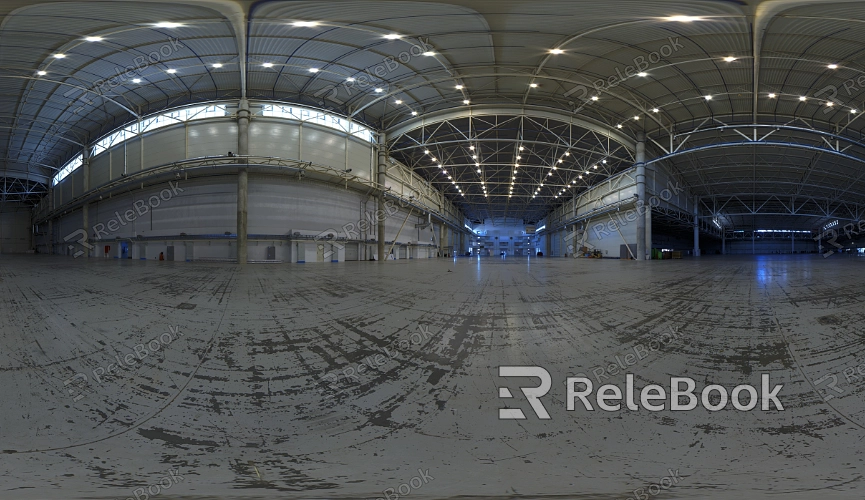How to Batch Process HDR Images
In the realm of 3D modeling and rendering, HDR images are essential for capturing a wide range of brightness and color, making them invaluable for creating realistic lighting and adding depth to textures. HDR images are commonly used in popular 3D software like 3ds Max, Blender, and Maya. However, when working on large-scale projects that involve processing numerous HDR images, handling them individually can be both time-consuming and prone to errors. Therefore, mastering batch processing techniques for HDR images is crucial. This article explores several common methods for batch processing HDR images and provides practical tips on how to apply these techniques efficiently in your workflow.

1.Why Batch Process HDR Images?
Boost Efficiency: In large projects, designers may need to process dozens or even hundreds of HDR images. Batch processing significantly reduces the time spent on manual operations, allowing designers to focus more on creative aspects of their work.
Ensure Consistency: Batch processing helps ensure that all images are treated with the same settings and effects, leading to consistent final rendering results. This is particularly important in projects where multiple HDR images need to be used together in the same scene.
2.Using Built-In Tools in 3D Software
Blender’s Batch Processing Capabilities: Blender offers basic batch processing features that designers can leverage through scripts or plugins. For example, using Python scripts, users can automate the import, adjustment, and export of HDR images.
Batch Processing in 3ds Max: 3ds Max also supports batch processing, allowing designers to render multiple HDR images at once using its Batch Render tool. Additionally, MaxScript can be used to further customize and automate complex HDR processing tasks.
Maya’s Batch Processing Methods: Maya users can utilize MEL or Python scripts to perform batch operations, especially when dealing with a large number of HDR files. Automating these steps with scripts can greatly enhance workflow efficiency.
3.Specialized Software for Batch Processing HDR Images
Photomatix Pro’s Batch Processing Feature: Photomatix Pro is a specialized software for HDR image processing, offering robust batch processing capabilities. Users can preset processing parameters and apply them to an entire folder of HDR images, completing the batch process quickly.
Batch Processing in Adobe Photoshop: While Photoshop is typically used for single-image editing, its Actions and Batch Processing features can also handle HDR images. By recording processing steps and applying them to a group of images, a certain degree of automation can be achieved.
4.Automating with Scripts
Python Scripts: Whether in Blender, Maya, or standalone image processing software, Python scripts are powerful tools for batch processing. By writing scripts, you can automate common HDR image operations such as exposure adjustment, color correction, and image output.
Command Line Tools: For designers familiar with command-line operations, using tools like ImageMagick to batch process HDR images is an efficient method. Command line tools can quickly process large volumes of images and can be easily integrated into an automated workflow.

5.Using Batch Processing Plugins
Blender Plugins: There are many plugins developed specifically for Blender that assist designers in batch processing HDR images. These plugins typically offer user-friendly interfaces and a variety of settings options, simplifying the batch processing workflow.
Photoshop Plugins: For Photoshop users, plugins like HDR Efex Pro can significantly enhance batch processing efficiency and offer more options and flexibility in effects.
6.Optimizing Your Batch Processing Workflow
Standardized Settings and Templates: Before starting batch processing, designers can create a template or standardized settings. These settings will be applied to all images, ensuring consistency and reducing the need for individual adjustments.
Pre-Processing and Post-Processing: Conducting appropriate pre-processing (such as noise reduction or cropping) before batch processing can improve the final results. Similarly, reviewing the results and making necessary fine-tuning adjustments after batch processing is an important step to ensure image quality.
7.Considerations for Batch Processing HDR Images
File Management: Good file management practices are crucial during batch processing. Ensure that original HDR images and processed images are stored separately, so that the original files can be easily found and restored if needed.
Hardware Resources: Batch processing large numbers of HDR images demands significant hardware resources. Designers should ensure that their workstations or servers have sufficient processing power to avoid inefficiencies caused by hardware bottlenecks.
By following these methods, 3D designers can efficiently handle large volumes of HDR images, maintaining consistent visual effects in large projects while saving valuable time. If you’re looking for high-quality HDR image resources, 3D textures, SketchUp models, or 3ds Max models, Relebook is an excellent resource. Downloading textures and models from Relebook and importing them into 3ds Max can significantly enhance the quality of your work, helping you to achieve outstanding results.

